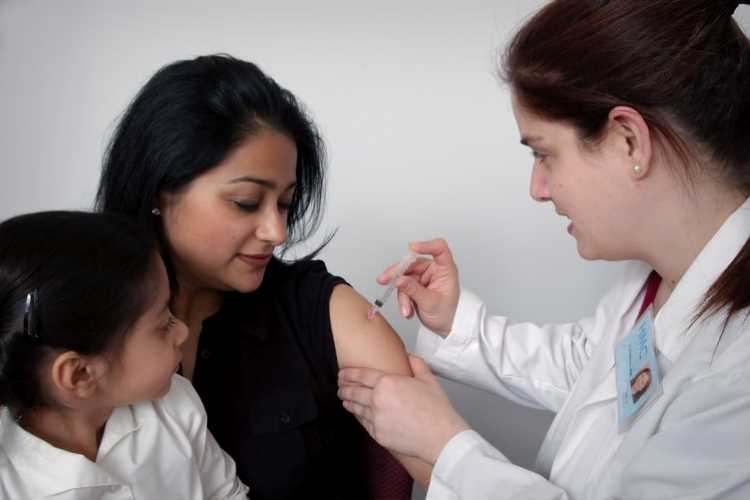
“Tomorrow Vaccines. Just saying,” Richard Horton gave everyone a naughty hint on twitter this Sunday. The editor of Lancet, one of the oldest and best regarded medical journals, was hinting at an upcoming original research article linked to a new Covid-19 vaccine. The vaccine was developed jointly by Oxford University’s Jenner Institute and AstraZeneca. The preliminary results of the Oxford vaccine trial were published on Monday in Lancet. This study was a phase 1/2, single blind, randomised control trial (RCT) conducted at five trial sites in the UK. The vaccine mentioned in the Lancet paper is a chimpanzee adenovirus-vectored vaccine modified to express the SARS-CoV-2 spike protein (ChAdOx1 nCoV-19). This vaccine was compared with a meningococcal conjugate vaccine as control (MenACWY).
The investigators recruited a total of 1,077 healthy adults in the age group of 18–55 years. All participants were subjects with no history of laboratory confirmed SARS-CoV-2 infection or of COVID-19-like symptoms. All recruited participants were randomly assigned (1:1) to receive one of the two vaccines. The two vaccines were given by a single intramuscular injection. In addition, a total of 10 participants were assigned to a non-randomised, unblinded Covid vaccine prime-boost group. This special group received a two-dose schedule, with the booster vaccine administered 28 days after the first dose.
READ I Covid-19 explainer: All you need to know about how coronavirus is transmitted
Humoral responses at baseline and following vaccination were assessed using multiple standard methods. Cellular responses too were assessed using appropriate standard methods. The outcomes of the RCT were efficacy, as measured by cases of symptomatic virologically confirmed COVID-19, and safety, as measured by the occurrence of serious adverse events. Safety was assessed for a period of 28 days after vaccination.
This preliminary report focused on safety, reactogenicity, and cellular and humoral immune responses. They reported that local and systemic reactions were more common in the Covid vaccine group. These included pain, fever, chills, muscle ache, headache and malaise. These symptoms were reduced by prophylactic use (given before the vaccine shot) of paracetamol. The researchers reported no serious adverse events related to the new vaccine.
In the nCoV-19 group, spike-specific T-cell responses peaked on day 14. Anti-spike IgG responses rose by day 28 and were boosted following a second dose. Neutralising antibody responses against SARS-CoV-2 were detected in 91% to 100% of participants when measured. After a booster dose, all participants had neutralising activity. The results of the Oxford vaccine published yesterday shows an acceptable safety profile and an excellent cellular/antibody response.
READ I COVID-19: Need guidelines for using data to combat pandemic
The researchers also inform us that older age groups with comorbidities, healthcare workers, and those with higher risk for SARS-CoV-2 exposure are being recruited currently to collect additional information. In addition, they have plans to evaluate the vaccine in children, once sufficient safety data have been accumulated from the adult studies.
A large-scale evaluation of this candidate vaccine in the form of a phase 3 programme has already started. Phase-3 trials involving thousands of volunteers have begun in South Africa, Brazil and the UK. This phase will allow assessment of how well the vaccine works to protect a diverse range of people from becoming infected with COVID-19. That is one “real result” we are waiting with fingers crossed. Experts are of the opinion that the project may be able to deliver emergency vaccines by October this year.
The vaccine world is currently buzzing like a beehive in the backyard on a bright summer day. There are at least 163 vaccines under development to be used against Covid-19. Vaccines are usually produced after a series of studies in ascending order starting from the preclinical to Phase 1, 2 and 3 studies. Phase 1 is usually done in 20 to 100 healthy volunteers or people with the disease/condition and the purpose here is to look at safety and dosage.
READ I Covid-19 opens window to an inclusive, greener future
Phase 2 is done including up to several hundred people with the disease/condition and the purpose here is to report efficacy and side effects. Phase 3 is done usually in hundreds to thousands of volunteers who have the disease or condition and the purposes here are to examine the efficacy and to report the adverse reactions associated with drug/vaccine use. Vaccines reach the licensed commercial use stage only after a successful phase 3 trial.
Among the 163 listed by the WHO, a total of 140 are still in the early preclinical phase. WHO reports 10 each in phase I and phase II respectively. Right now, just three are in the Phase III as per the WHO report (July 15).
There is an Indian part to the Oxford vaccine cheer. Adar Poonawalla, CEO of the Serum Institute of India, the world’s largest vaccine manufacturer which is also partnering the Oxford researchers, said that his company has plans to start human trials for this vaccine in India by August 2020. In addition, they are gearing up to produce one billion doses in India. And to complete the picture, the Indian entrant Covaxin is also in the game. A total of 12 sites were selected by the Indian Council for Medical Research (ICMR) for conducting phase I and II human trials of Covaxin. The phase I trial started earlier this week.
READ I Addressing livelihood issues of fisherfolk during seasonal fishing ban
A cautionary note to end it all. You need to read between the lines. There was no confirmatory evidence to directly suggest that this new vaccine from Oxford will protect you from infection by the current bug. All evidence mentioned above is just antibodies and cellular responses. Fighting a virus goes much beyond these details. The worrying fact that we may never get a vaccine against Covid 19 still holds here. Even if we do get one, it still may not be a vaccine that protects us from getting the virus, but rather one that reduces symptoms. Currently, all permutations and combinations are possible in this thrilling vaccine race for Covid-19.
So, be modest in your expectations. The early signs are good and the results have surpassed the expectations of global research community. The vaccine may either be fully efficacious or be partly effective. The remaining part of the trial will answer more questions. Till then climb two steps to cheer and don’t go up any further.
(Dr Manu Raj is a paediatrician, clinical researcher and research methodologist based in Kochi.)
Dr Manu Raj is a paediatrician, clinical researcher and research methodologist based in Kochi.

